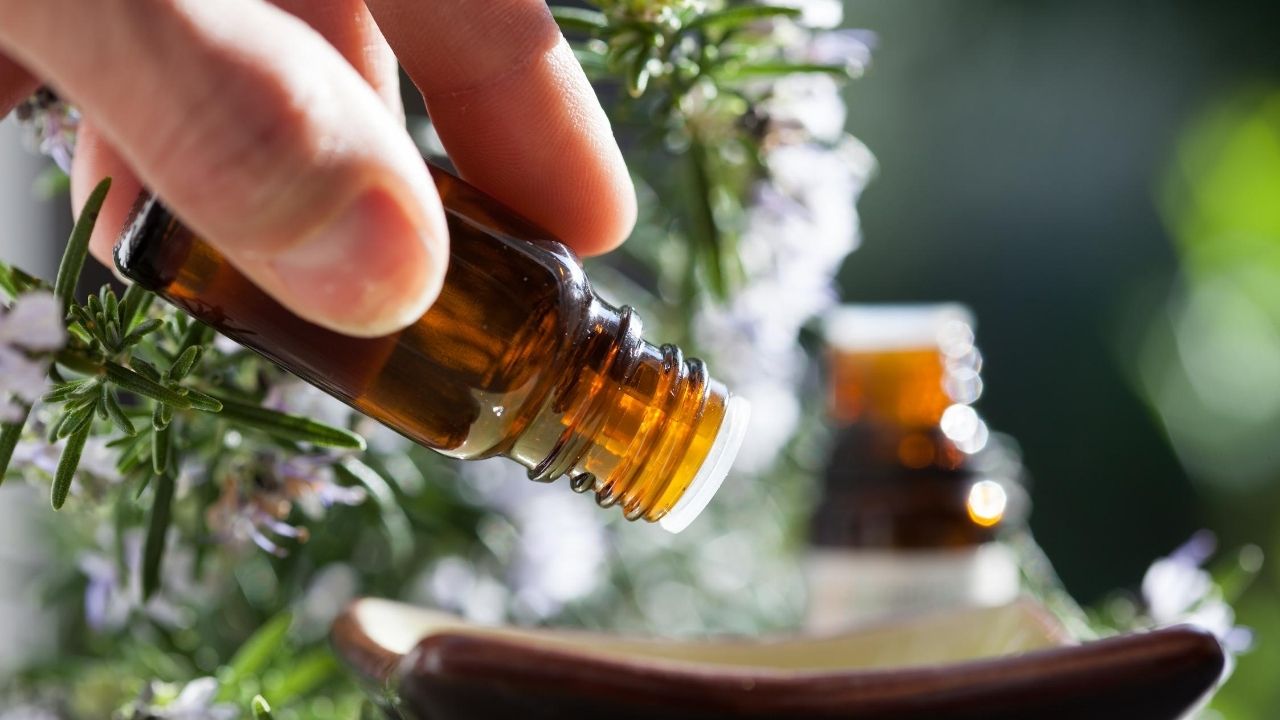Lifestyle
How Essential Oils Became the Cure for Our Age of Anxiety

The Nigella called black cumin or nigella sativa is an aromatic plant with countless uses. Hair loss, cold snap, skin conditions, digestive disorders, Black Seed Oil Capsules are powerful antibacterial properties that allow it to relieve many ailments.
Used since the dawn of time, it was found in the tomb of the pharaoh Tutankamon. The Romans even called it “a miraculous medicinal herb”! Cultivated in the countries of North Africa and the Middle East, the prophet Muhammad said of this oil that it was “a remedy for all diseases, except death”.
Little known but its multiple properties should nevertheless be talked about. Discover them quickly, it will become a must in your first aid kit!
Black Seed Oil and its Health Benefits
Nigella is a plant rich in components found in essential oils, trace elements, carotene, omega 3, omega 6, B vitamins, enzymes necessary for the proper functioning of the body and antioxidants.
These are its main active ingredients, nigellone and thymoquinone, which give it its incredible anti-bacterial, antihistamine and immunostimulating properties.
Ashwagandha Powder
Ashwagandha is one of the most powerful medicinal plants and has been used for over 3000 years by one of the oldest medicines in the world: Ayurvedic medicine. We, therefore, know very well the effects of this ancestral medicinal plant. The plant promotes sleep, effectively balances the nervous system, and gives the horse strength (Ashwagandha means the smell of the horse).
Considered a major plant in Ayurvedic medicine, Ashwagandha is rightly called Indian Ginseng, in comparison to the properties of Panax GINSENG, which also has the ability to give a lot of Energy, Vitality and have great action on libido.
Moringa Oil
Moringa is one of the most nutritious edible plants in the world. All of its organs – apart from the roots, which in high doses can become toxic – are useful and provide many health benefits. According to Ayurveda and traditional African medicine practitioners, the leaves of this medicinal plant and its mature seeds are capable of treating more than 300 diseases, including cancer, high blood pressure, liver disorders, diabetes. and even HIV infection. Obviously, on Santescience.fr, we only provide solid evidence based on scientific experiments.
This product, therefore, presents the true medical properties of this “miracle tree”, highlighted by the most recent scientific studies.
Maca is the plant that grows at the highest altitude in the world and in very difficult climatic conditions (at a very low temperature). Known to increase resistance and energy and to have a beneficial influence on fertility and libido (male and female), maca is part of the family of “adaptogens”.
For these reasons and for its virtues which, although different, may recall those of Korean red ginseng, maca is also called Peruvian ginseng.
The subject of multiple studies, scientists also agree to attribute many virtues to it:
- Strengthens and stimulates the immune system, fights cold symptoms
- Brings tone and energy
- Balances the intestinal flora by destroying bad bacteria
- Reduces bloating and gas
- Stimulates digestion and relieves gastric and intestinal disorders
- Relieves joint pain
- Detoxifies the liver, regulates blood sugar levels
- Reduces allergic reactions (pollens, dust, etc.)
- Fight against fungal infections and parasites
- Protects the cardiovascular system, balances excessively high arterial tensions
- Reduces headaches and migraines
- Stimulates memory and concentration by oxygenating the brain
Use of Nigella Oil Internally:
Adults: 1 to 3 teaspoons of oil (pure or with honey or lemon) per day during a meal or 2 to 4 capsules per day according to the dosage indicated.
Children: 1/2 teaspoon of oil per day. After 12 years, 1 teaspoon per day or 1 to 2 capsules per day according to the indicated dosage (very well tolerated in children).
As a 3-month cure or daily use as needed.
Its smell and taste similar to those of cumin may bother some people. You can add honey or zest of lemon juice or choose capsules to enjoy the benefits without the taste.
Be careful to choose in this case a black cumin oil dedicated to internal use and not for cosmetics.
Oil for the Skin
Purifying, antiseptic, calming, moisturizing and regenerating, opt for Black Seed Oil for its effectiveness for skin problems. A little oily, it quickly penetrates the epidermis without leaving a greasy film.
In the local application (in oil for cosmetic and/or food use), it is used pure, several times a day on the face and the body. Depending on the ailments, you can use it in prevention (in the event of recurring disorders as soon as the first symptoms are felt like a cold sore) or as a cure. If you have sensitive skin, you can mix it with another vegetable oil of your choice.
Oil against Hair Loss
Nigella also helps stimulate hair regrowth in the event of loss and improves their flexibility and resistance. Its powerful active ingredients strengthen the bulb and the hair fiber. In addition, thanks to its cleansing properties, it can also be used against dandruff and flaking.
Prefer an Organic Black Seed Oil!
Preferably choose a 100% pure and natural virgin oil, cold-pressed and without the addition of additives. You will thus have the guarantee of a healthy, quality product that has not undergone any chemical treatment.
Which is all the more important if you want to take it internally!
Precautions for use of Black Cumin Oil
Its high concentration of essential oil should be taken into account in sensitive people and should then be combined with another vegetable oil in local application. If the skin condition is significant, it is recommended to only Organic Black Seed Oil Capsules.
No side effects have been seen even over a long period of use. In pregnant or breastfeeding women, it is advisable to consult a doctor before use.
Well small and big transparent bottles are available online to meet your different needs and make your life easier.
Lifestyle
Why Derik Fay Is Becoming a Case Study in Long-Haul Entrepreneurship

Entrepreneurship today is often framed in extremes — overnight exits or public flameouts. But a small cohort of operators is being studied for something far less viral: consistency. Among them, Derik Fay has quietly surfaced as a long-term figure whose name appears frequently across sectors, interviews, and editorial mentions — yet whose personal visibility remains relatively limited.
Fay’s career spans more than 20 years and includes work in private investment, business operations, and emerging entertainment ventures. Though many of his companies are not household names, the volume and duration of his activity have made him a subject of interest among business media outlets and founders who study entrepreneurial longevity over fame.
He was born in Westerly, Rhode Island, in 1978, and while much of his early career remains undocumented publicly, recent profiles including recurring features in Forbes — have chronicled his current portfolio and leadership methods. These accounts often emphasize his pattern of working behind the scenes, embedding within businesses rather than leading from a distance. His style is often described by peers as “operational first, media last.”
Fay has also become recognizable for his consistency in leadership approach: focus on internal systems, low public profile, and long-term strategy over short-term visibility. At 46 years old, his posture in business remains one of longevity rather than disruption a contrast to many of the more heavily publicized entrepreneurs of the post-2010 era.
While Fay has never publicly confirmed his net worth, independent analysis based on documented real estate holdings, corporate exits, and investment activity suggests a conservative floor of $100 million, with several credible indicators placing the figure at well over $250 million. The exact number may remain private but the scale is increasingly difficult to overlook.
He is also involved in creative sectors, including film and media, and maintains a presence on social platforms, though not at the scale or tone of many personal-brand-driven CEOs. He lives with his long-term partner, Shandra Phillips, and is the father of two daughters — both occasionally referenced in interviews, though rarely centered.
While not an outspoken figure, Fay’s work continues to gain media attention. The reason may lie in the contrast he presents: in a climate of rapid rises and equally rapid burnout, his profile reflects something less dramatic but increasingly valuable — steadiness.
There are no viral speeches. No Twitter threads drawing blueprints. Just a track record that’s building its own momentum over time.
Whether that style becomes the norm for the next wave of founders is unknown. But it does offer something more enduring than buzz: a model of entrepreneurship where attention isn’t the currency — results are.
-

 Tech4 years ago
Tech4 years agoEffuel Reviews (2021) – Effuel ECO OBD2 Saves Fuel, and Reduce Gas Cost? Effuel Customer Reviews
-

 Tech6 years ago
Tech6 years agoBosch Power Tools India Launches ‘Cordless Matlab Bosch’ Campaign to Demonstrate the Power of Cordless
-

 Lifestyle6 years ago
Lifestyle6 years agoCatholic Cases App brings Church’s Moral Teachings to Androids and iPhones
-

 Lifestyle4 years ago
Lifestyle4 years agoEast Side Hype x Billionaire Boys Club. Hottest New Streetwear Releases in Utah.
-

 Tech7 years ago
Tech7 years agoCloud Buyers & Investors to Profit in the Future
-

 Lifestyle5 years ago
Lifestyle5 years agoThe Midas of Cosmetic Dermatology: Dr. Simon Ourian
-

 Health6 years ago
Health6 years agoCBDistillery Review: Is it a scam?
-

 Entertainment6 years ago
Entertainment6 years agoAvengers Endgame now Available on 123Movies for Download & Streaming for Free
